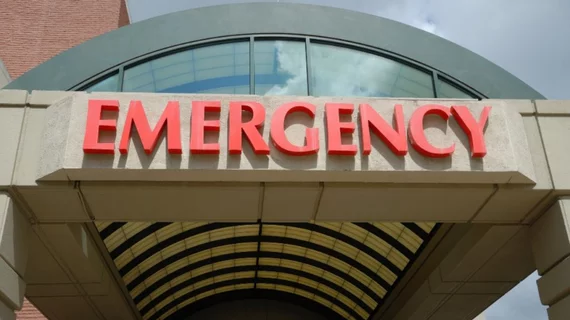82% of CTA head and neck scans in 1 emergency department had no actionable findings
About 82% of CT angiograms of the head and neck at one emergency department had no actionable findings, researchers reported Friday in the Journal of the American College of Radiology [1].
Nonphysician practitioners and ED residents also ordered a significantly greater proportion of such exams, which were found to be negative or contain no results related to the reason patients presented for treatment. The findings come as providers have seen growing volumes of CTA scans in the ED, another recent single-center study found.
Radiology has strived to create clinical decision support tools to curb imaging overuse, experts noted. But it appears more work is needed to correct ordering patterns that produce volume but little value.
“Imaging stewardship and curbing imaging overutilization in the ED is not only a key effort to reduce ED overcrowding, but will also translate to decreased levels of burnout and fatigue experienced by the ED radiologist,” William A. Mehan, MD, MBA, with the Department of Radiology at Massachusetts General Hospital, and co-authors wrote Sept. 15. “The results of this study demonstrate that low-yield imaging was performed by ED practitioners at all levels of training; however, relatively decreased rates of negativity were seen with more experienced providers, such as the ED attendings. This suggests that experience of the ED practitioner may influence the utilization of advanced imaging.”
For the study, researchers retrospectively reviewed records from their Boston-based institution spanning the six years ending in 2022. They targeted emergency department patients—with nonfocal neurologic complaints and no history of trauma, surgery, nor intracranial malignancy—who underwent CT angiograms of the head and neck. Investigators categorized each exam on a four-point schedule ranging from negative to acute findings that may account for the patient’s presentation.
The search turned up a total of 960 CTAs, with patients averaging age 50 at the time of the scan. Headache was the most common reason for visiting the ED at 76%. Three-quarters of cases were negative while 7% resulted in chronic imaging findings unrelated to their motivation for seeking treatment. Another 12.5% had nonacute or nonemergency findings that potentially related to their ED presentation, and only 5.5% were the, deemed urgent, acute and pertaining to what was written on their check-in form.
ED physicians ordered the fewest number of CTA scans during the study period at 11%, followed by resident physicians 23% and nonphysician providers (67%). Mehan et al. found a statistically significant difference in patient age between these provider cohorts, with average age trending higher for patients treated by a physician (p=0.04). Studies ordered by docs also were more likely to have a severity score of 2 or higher. Across those deemed level 3 (emergent/acute, possibly relating to presentation) NPPs ordered 3.9%, followed by 7.4% for residents and 11.4% for attendings. After adjusting for patient age and gender, exams ordered by physicians had 117% increased odds of having a high severity score with statistical significance.
“Our findings are similar to those of one study that demonstrated that increasing years of experience of the ED practitioner are associated with lower utilization and increased diagnostic yield of CT pulmonary embolism studies. This is salient since there is a national trend towards increased NPPs caring for ED patients,” the authors noted. “Future multidisciplinary education efforts coupled with additional imaging ordering support platforms should be explored to address this pattern and reduce variability in ordering imaging studies,” they added later.
Read more, including potential study limitations, in the Journal of the American College of Radiology at the link below.

